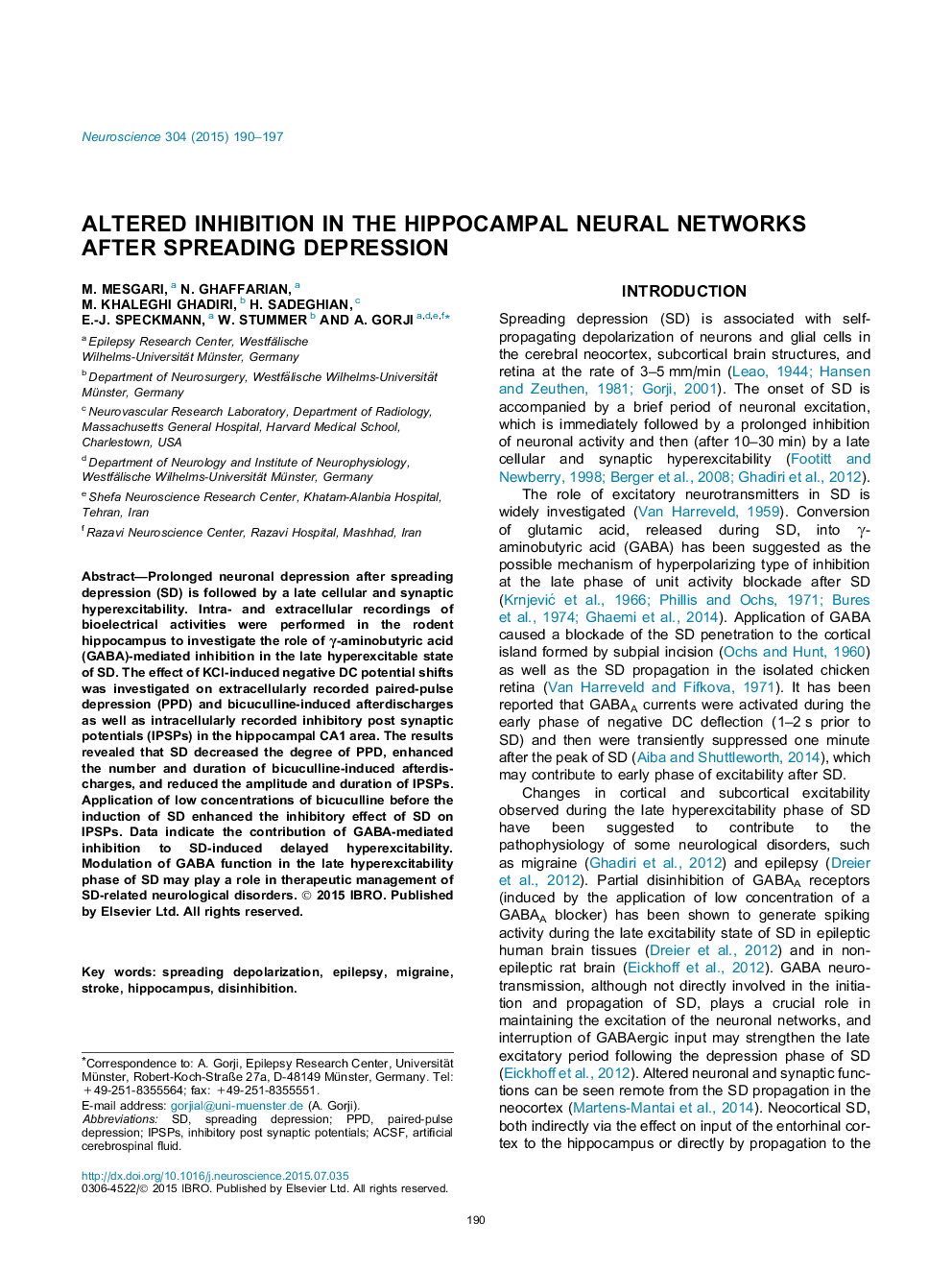| Article ID | Journal | Published Year | Pages | File Type |
|---|---|---|---|---|
| 6272383 | Neuroscience | 2015 | 8 Pages |
â¢Delayed neuronal hyperexcitability occurred after spreading depression (SD).â¢Hyperexcitability after SD may play a role in the mechanism of SD-related disorders.â¢SD enhanced the number and duration of bicuculline-induced afterdischarges.â¢Paired-pulse inhibition and inhibitory post synaptic potentials were reduced by SD.â¢GABA-mediated inhibition contributes to SD-induced delayed hyperexcitability.
Prolonged neuronal depression after spreading depression (SD) is followed by a late cellular and synaptic hyperexcitability. Intra- and extracellular recordings of bioelectrical activities were performed in the rodent hippocampus to investigate the role of γ-aminobutyric acid (GABA)-mediated inhibition in the late hyperexcitable state of SD. The effect of KCl-induced negative DC potential shifts was investigated on extracellularly recorded paired-pulse depression (PPD) and bicuculline-induced afterdischarges as well as intracellularly recorded inhibitory post synaptic potentials (IPSPs) in the hippocampal CA1 area. The results revealed that SD decreased the degree of PPD, enhanced the number and duration of bicuculline-induced afterdischarges, and reduced the amplitude and duration of IPSPs. Application of low concentrations of bicuculline before the induction of SD enhanced the inhibitory effect of SD on IPSPs. Data indicate the contribution of GABA-mediated inhibition to SD-induced delayed hyperexcitability. Modulation of GABA function in the late hyperexcitability phase of SD may play a role in therapeutic management of SD-related neurological disorders.
